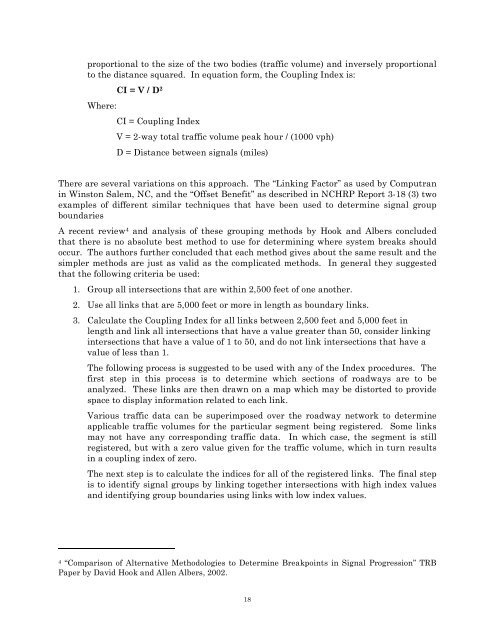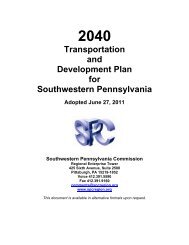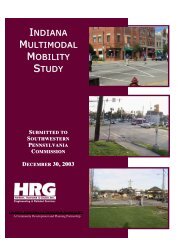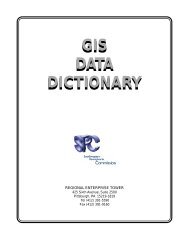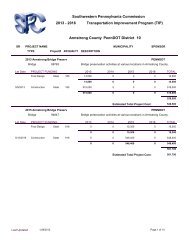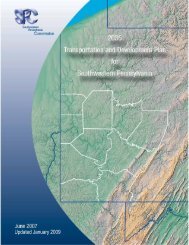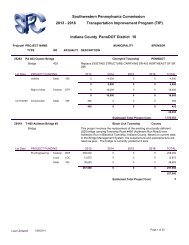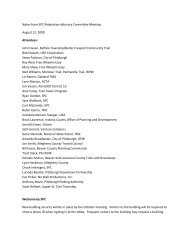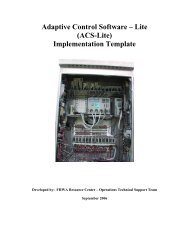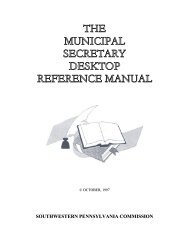FHA Signal Timing On A Shoestring
FHA Signal Timing On A Shoestring
FHA Signal Timing On A Shoestring
Create successful ePaper yourself
Turn your PDF publications into a flip-book with our unique Google optimized e-Paper software.
proportional to the size of the two bodies (traffic volume) and inversely proportional<br />
to the distance squared. In equation form, the Coupling Index is:<br />
Where:<br />
CI = V / D 2<br />
CI = Coupling Index<br />
V = 2-way total traffic volume peak hour / (1000 vph)<br />
D = Distance between signals (miles)<br />
There are several variations on this approach. The “Linking Factor” as used by Computran<br />
in Winston Salem, NC, and the “Offset Benefit” as described in NCHRP Report 3-18 (3) two<br />
examples of different similar techniques that have been used to determine signal group<br />
boundaries<br />
A recent review 4 and analysis of these grouping methods by Hook and Albers concluded<br />
that there is no absolute best method to use for determining where system breaks should<br />
occur. The authors further concluded that each method gives about the same result and the<br />
simpler methods are just as valid as the complicated methods. In general they suggested<br />
that the following criteria be used:<br />
1. Group all intersections that are within 2,500 feet of one another.<br />
2. Use all links that are 5,000 feet or more in length as boundary links.<br />
3. Calculate the Coupling Index for all links between 2,500 feet and 5,000 feet in<br />
length and link all intersections that have a value greater than 50, consider linking<br />
intersections that have a value of 1 to 50, and do not link intersections that have a<br />
value of less than 1.<br />
The following process is suggested to be used with any of the Index procedures. The<br />
first step in this process is to determine which sections of roadways are to be<br />
analyzed. These links are then drawn on a map which may be distorted to provide<br />
space to display information related to each link.<br />
Various traffic data can be superimposed over the roadway network to determine<br />
applicable traffic volumes for the particular segment being registered. Some links<br />
may not have any corresponding traffic data. In which case, the segment is still<br />
registered, but with a zero value given for the traffic volume, which in turn results<br />
in a coupling index of zero.<br />
The next step is to calculate the indices for all of the registered links. The final step<br />
is to identify signal groups by linking together intersections with high index values<br />
and identifying group boundaries using links with low index values.<br />
4 “Comparison of Alternative Methodologies to Determine Breakpoints in <strong>Signal</strong> Progression” TRB<br />
Paper by David Hook and Allen Albers, 2002.<br />
18


